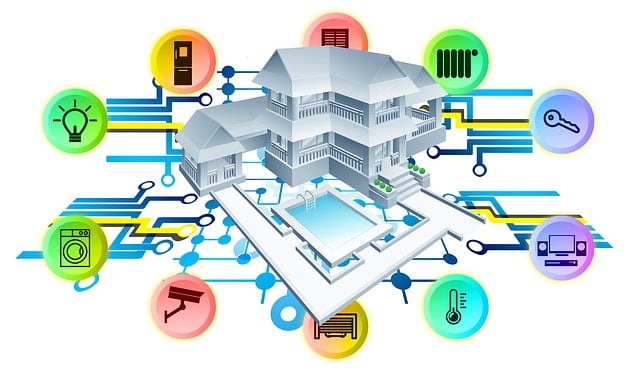Upgrading to energy-efficient lighting and home features like LED bulbs, smart thermostats, optimized insulation, and renewable energy sources (e.g., solar panels) significantly reduces utility bills, carbon emissions, and creates a sustainable living environment. Key strategies include switching to energy-efficient appliances, installing energy-efficient windows, and adopting eco-friendly practices for enhanced energy conservation, comfort, and property value. These upgrades not only benefit the wallet but also promote environmental consciousness.
In today’s world, understanding and reducing energy costs is crucial for both environmental sustainability and financial savings. Lighting, a fundamental aspect of our daily lives, accounts for a significant portion of an energy-efficient home. This article explores the impact of lighting on energy expenditures, delving into various eco-friendly home upgrades like LED lighting, natural light design, and smart bulbs. Furthermore, it navigates energy-saving renovations, emphasizing energy-efficient windows, doors, smart thermostats, and insulation upgrades. We also investigate sustainable home improvements, highlighting solar panel installation and energy-efficient appliances, showcasing their long-term benefits for both you and the planet.
Understanding the Impact of Lighting on Energy Costs
Lighting accounts for a significant portion of an average household’s energy bill. It’s often overlooked as a potential area for saving, but the impact can be substantial. Many traditional lighting options guzzle energy, leading to higher utility costs and increased carbon footprint. However, embracing eco-friendly lighting solutions is an effective strategy for any homeowner aiming to reduce energy consumption and create a more sustainable living environment.
In today’s market, there are numerous energy-efficient home upgrades centered around lighting. Simple switches to LED bulbs, for instance, can instantly cut down energy usage compared to incandescent or fluorescent alternatives. Moreover, integrating smart thermostats and optimizing home insulation upgrades further enhance energy savings. Some homeowners even opt for renewable energy sources like solar panel installation, which can offset electricity costs while promoting a greener lifestyle. These sustainable home improvements not only reduce energy bills but also contribute to a more environmentally conscious eco-friendly home.
– The role of lighting in energy consumption
Lighting plays a significant role in a home’s overall energy consumption. Traditional lighting fixtures consume substantial amounts of electricity, contributing to high energy bills and environmental concerns. In today’s eco-conscious world, homeowners are increasingly looking for sustainable alternatives that offer both energy efficiency and long-term cost savings. By adopting energy-saving renovations like switching to LED bulbs and installing smart thermostats, owners can significantly reduce their carbon footprint without compromising on lighting quality.
One of the key aspects of an energy-efficient home is proper insulation upgrades and energy-efficient windows, which minimize heat loss during winters and heat gain in summers, thus reducing the need for excessive heating or cooling. Additionally, sustainable home improvements such as solar panel installation and the use of energy-efficient appliances not only lower utility bills but also contribute to a greener environment. These eco-friendly home upgrades are becoming increasingly popular as folks strive to live more sustainably and reduce their reliance on non-renewable energy sources.
– Environmental and economic benefits of eco-friendly lighting
Adopting eco-friendly lighting options is a powerful step toward creating an energy-efficient home and reducing utility bills. These lighting solutions, such as LED bulbs and natural light optimization, offer significant environmental benefits by minimizing energy consumption and reducing carbon emissions. By choosing sustainable home improvements like energy-saving renovations and smart thermostats, homeowners can contribute to a greener planet while cutting down on energy costs.
Moreover, integrating eco-friendly features like energy-efficient windows, solar panel installation, and home insulation upgrades not only reduces electricity usage but also enhances the overall comfort and value of the residence. These strategic changes are part of a broader trend towards sustainable living, where each small step—from LED bulbs to comprehensive energy-efficient appliances—makes a difference in creating a more environmentally conscious and economically viable home.
Eco-Friendly Home Upgrades: Illuminating Options
Eco-friendly home upgrades are a powerful way to reduce energy costs and minimize your environmental impact. One of the simplest and most effective changes is transitioning to energy-efficient lighting. LED bulbs, for instance, consume significantly less electricity than traditional incandescent bulbs while offering longer lifespans.
Beyond lighting, other sustainable home improvements like energy-efficient windows, smart thermostats, and home insulation upgrades can substantially lower your energy bills. For a more comprehensive approach, consider integrating renewable energy sources such as solar panel installation, which not only reduces reliance on the grid but also contributes to a greener planet. Additionally, updating to energy-efficient appliances can further enhance your home’s eco-friendliness while providing cost savings over time.
Adopting eco-friendly lighting options and making strategic home upgrades like installing energy-efficient windows, smart thermostats, and considering solar panel installation or home insulation improvements can significantly reduce energy costs and contribute to a more sustainable future. These changes not only lower utility bills but also transform your home into an energy-efficient haven. Embracing sustainable home improvements, including the integration of energy-saving appliances, is a powerful step towards minimizing your environmental footprint.
